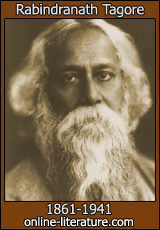Saturday, September 1st., Comarques.
 |
| Comarques, Thorpe-le-Soken. The door at the rear of the house is covered by a moulded canopy with an inscribed plaque reading ‘Enoch Arnold Bennett, Author lived here 1913 – 1921. |
Comarques is a Queen Anne House , in pale red brick, delightfully situated in a large garden in the country in a quiet corner of Essex. I once wrote to Mrs Herzog, an American friend, that "we now possess an early Queen Anne house near the Essex coast and in February are going to install ourselves there definitely for everlasting; our deaths will one day cause a sensation in the village which we shall dominate, and the English villagers and gentry will wonder, as they stroll through the deserted house, why the madman had three bathrooms in a home so small; they will not know that it was due solely to a visit to the USA ... Regrettably, my talent as a clairvoyant was not nearly as great as my talent as a writer!
I took a month's holiday ending yesterday. We went to spend two days at the Schusters during it, and I saw the first batch of the American Army from the windows of the Yacht Club.
During World War I, the first 14,000 U.S. infantry troops landed in France at the port of Saint Nazaire. The landing site had been kept secret because of the menace of German submarines, but by the time the Americans had lined up to take their first salute on French soil, an enthusiastic crowd had gathered to welcome them. However, the "Doughboys," as the British referred to the green American troops, were untrained, ill-equipped, and far from ready for the difficulties of fighting along the Western Front.
 |
| American soldiers in France 1918 |
Health not very good during it, but a distinct benefit as regards the outlook on work actually in progress. I made some advance in watercolours, and more still in monotypes.
 |
| One of my landscapes |
I didn't read a lot. Hardy's "Pair of Blue Eyes", full of fine things and immensely sardonic. Last month I dined at Barrie's in London with Thomas Hardy and his wife. Hardy was very lively, talked like anything! He has all his faculties unimpaired. Quite modest and without the slightest pose. Later G.B. Shaw and the Wellses came and Hardy seemed to curl up from fatigue. He became quite silent. The spectacle of Wells and GBS talking firmly and strongly about the war, in their comparative youth, in front of this aged, fatigued and silent man - incomparably their superior as a creative artist - was very striking.
Also read Murray on Euripides - formless but gradually getting at something.
Euripides and his Age by Gilbert Murray (1913). This is a complete survey of the drama of Euripides, along with the historical, social and religious context in which he wrote. It includes synopses of all of the plays, including mentions of fragmentary and lost plays, and also serves as an introduction to the mechanics of Greek drama, including 'the messenger,' the 'deus ex machina,' and the 'Chorus.' Gilbert Murray (1886-1957) was a British classicist at Oxford, who translated much of the body of Greek drama during the early 20th century.
Reminiscences of Tagore - good.
"Duchesse de Langeais", quite a major work, which thoroughly held me.
La Duchesse de Langeais is an 1834 novel by French author Honoré de Balzac (1799-1850) and included in the Scènes de la vie parisienne section of his novel sequence La Comédie humaine. It is part of his 1839 trilogy Histoire des treize: Ferragus is the first part, Part Two is La Duchesse de Langeais and Part Three is The Girl with the Golden Eyes. It first appeared in 1834 under the title Ne touchez pas la hache (Don’t Touch the Axe) in the periodical L'Écho de la Jeune France.

Hello, I am a researcher at the University of London preparing a history of Thorpe-le-Soken for publication. I am looking for a picture of Comarques house to use in the book. I came across this one on your website under 'Wartime Interlude' published 1 Sept. 2012. Would you be able to supply a high-resolution copy of the photograph and, if so, would you be able to give permission for its reproduction in the book? I can give more details if this seems possible. Kind regards, Dr Chris Thornton, Institute of Historical Research, University of London: c.c.thornton@btinternet.com
ReplyDelete